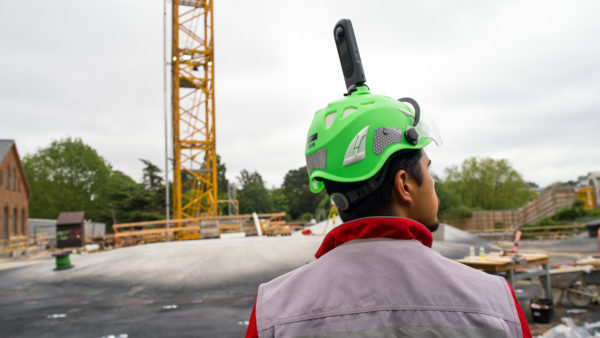A fast and simple digital tool to verify the thermal performance of new buildings and bridge the “performance gap” has been developed by Cambridge Consultants and the Redbarn Group.
There is a clear performance gap between design and construction. Closing this gap, by enabling the construction industry to verify that new buildings perform as specified, can have a massive impact in helping the UK to meet its climate change commitments.
With the UK’s political parties committed to huge homebuilding programmes, alongside the need to halve energy usage from new buildings by 2030, it has never been more vital to ensure that new buildings meet their thermal specifications. But an Innovate UK study found that average total carbon emissions for new build homes were 2.6 times higher than the design estimate, while no homes in the study achieved their “zero carbon” design estimate in practice.
VeriTherm is a new and fast approach to verifying the thermal performance of buildings prior to occupation. The tool compares actual performance of a building against the designed performance, as opposed to measuring exact heat losses. If the designed thermal properties of the building have not been reached, further investigation can then look for specific causes and remedies.
VeriTherm provides a straightforward approach that gives a clear pass/fail result, following an overnight test. The platform takes real-time data from strategically placed sensors as the building is heated and then cools overnight.
Patent pending algorithms compare recorded heating and cooling curves against the calculated theoretical design. Performance of the algorithms was verified by testing against a “hot box”, a dedicated structure built by Cambridge Consultants that could be heated and allowed to cool. Final testing was carried out in a real building.
Traditional methods of assessing thermal performance use the standard assessment procedure (SAP) a calculation derived from a manufacturer’s datasheet values, standard tables and allowances for junctions and potential bridging. With SAP, no direct measurement occurs on site, except for an air permeability test which ensures that the building is effectively sealed, meaning the result applies only to an idealised build.
At the other extreme is the use of “co-heating”, where the amount of energy required to maintain a constant, raised, indoor temperature is measured, but this test can take more than two weeks and is used mainly for research as it has proved to be too lengthy and costly to become a mainstream method. The energy performance gap demonstrates that these methods are proving ineffective. Buyers and builders need something in between – a simple test to see if the expected values are being met in practice.
A recent letter from the UK’s Ministry of Housing, Communities & Local Government said it was: “…keen that [VeriTherm] is further developed and a workable method to measure the thermal performance of homes comes to market” and continued, “this product could therefore contribute to reducing CO2 emissions from homes, reducing occupant bills and to the UK meeting its carbon budgets”.
Andrew Lintott, senior consultant at Cambridge Consultants, said: “The UK’s Climate Change Act gives us a little over a decade to halve energy usage from new buildings, but the industry continues to construct buildings that underperform their design estimate. Bold and rapid action is required. VeriTherm shows that by harnessing the right technologies we can create pragmatic and powerful tools that contribute to achieving lower emissions.”
- For more information, visit: www.cambridgeconsultants.com
Image: Thodonal/Dreamstime.com












